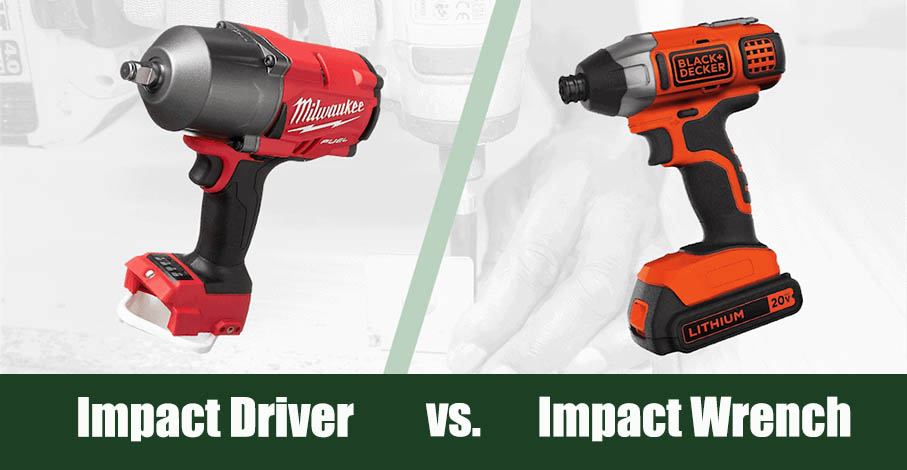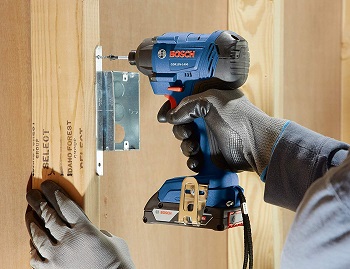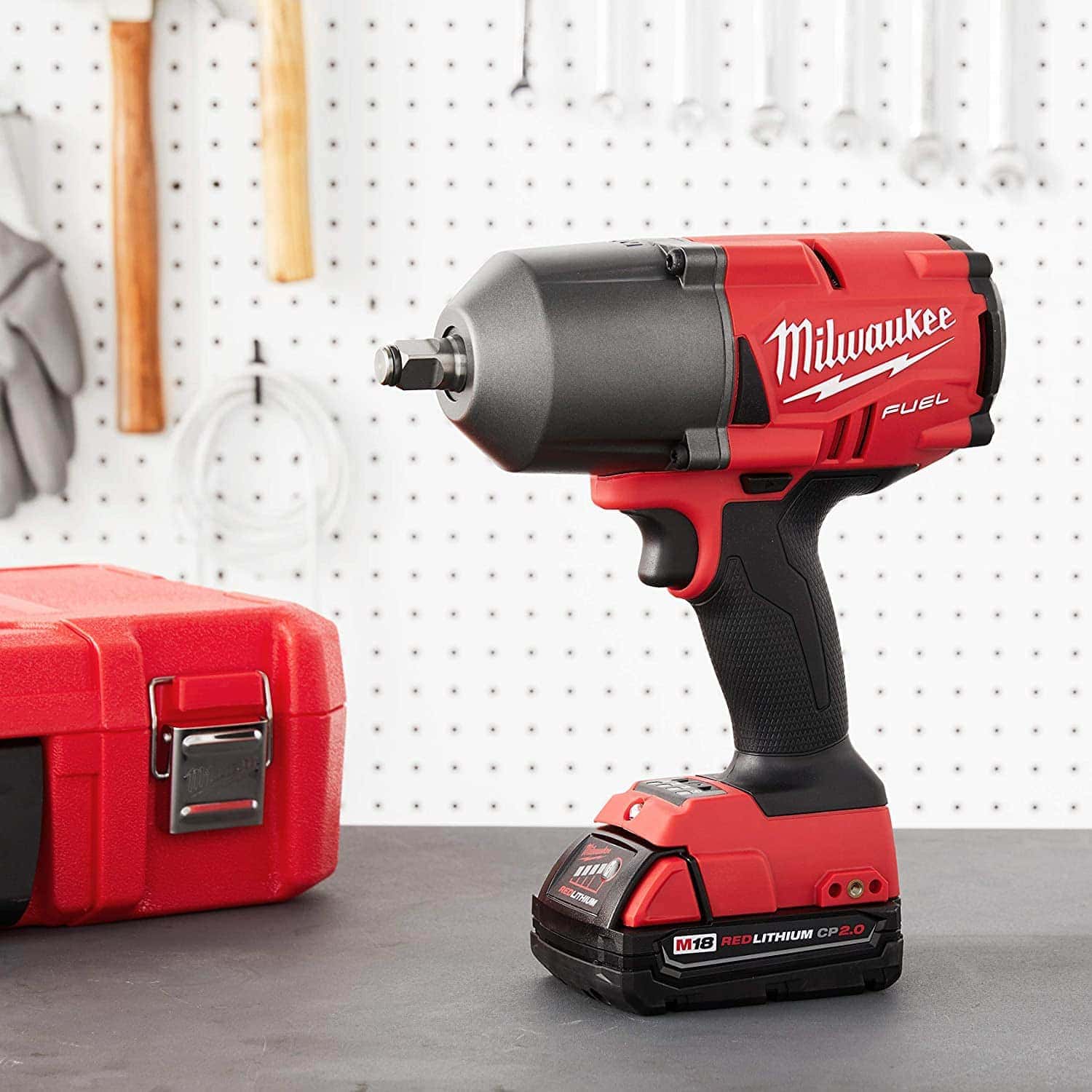Impact Driver vs Impact Wrench: Which is Best for Your Needs?
-
- Last updated:


Purchasing and using the correct drill/driver for a specific job is often a point of confusion. Most drills look very similar, and it can be easy to choose the wrong drill for the job at hand.
Impact drivers and impact wrenches are tools that DIY-ers tend to add to their arsenal after they encounter a task too large for their standard cordless drill/driver.
By reviewing the key differences of these important tools below, you will be way ahead of the game when the time comes to make this purchase.

Impact Driver Overview
Have you ever been driving a screw into a wooden framing member, only to have your cordless drill stall out? If so, an impact driver may have been able to complete this task for you. As a rule of thumb, impact drivers are typically able to exert twice the torque of a standard cordless drill.

Impact Driver Basic Functions
A good starting point to developing a strong understanding of an impact driver is a simple comparison to the standard cordless drill/driver. An impact driver has a similar appearance to a cordless drill, but an impact driver uses rapid concussive rotary force to increase the torque output of the tool.
Improved Torque
A typical impact driver can exert 125 inch-pounds (in-lbs). of torque. A standard cordless drill uses rotary force alone, without the concussion, and they can typically only exert around 60 in-lbs. of torque.
An impact driver can complete many of the same tasks as a standard cordless drill; however, the impact driver is better suited for tasks that put its extra torque to good use, such as driving in long screws into hardwood or drilling large diameter holes.
Price
Prices for impact drivers are fairly reasonable, with most models coming in around $60 to $100 for the tool alone.
Impact Driver Chuck
The chuck of the impact driver is another differentiating factor between other drill/drivers. An impact driver features a ¼-inch hex collet as a chuck to hold bits. This is an important feature, as this chuck allows for greater torque than a standard cordless drill. Special ¼-inch hexagonal drill bits are required for impact drivers. To install or change drill bits, slide the collet of the drill forward, while simultaneously pulling out the drill bit.
- Great for driving in long screws
- Great for drilling large holes in lumber
- Incredibly versatile, can be used for a wide assortment of tasks
- Affordable
- Lacks the torque capabilities of an impact wrench

Impact Wrench Overview
If you do a lot of your own automotive work, you may want to consider purchasing an impact wrench. Impact wrenches are used for removing and installing large nuts and bolts. Impact wrenches are commonly used in automotive shops to remove and install the lug nuts that hold on wheels. As a rule of thumb, impact wrenches can typically provide twice the amount of torque as an impact driver.

Impact Wrench Basic Functions
Similar to an impact driver, an impact wrench utilizes rapid concussive rotary force to rotate the shaft of the tool. Impact wrenches are generally only used for heavy nut and bolt removal and installation. This is a key difference between impact drivers and impact wrenches.
Heavy-Duty Torque
Impact wrenches can exert an immense amount of torque; they deliver about 250 in-lbs. of torque on average. This makes impact wrenches too powerful to drive screws or similar tasks. Most impact wrenches operate on compressed air, but some models are manufactured as electric, both corded and cordless.
Price
Prices for impact wrenches reflect the additional torque they are able to exert, with most models fetching a price of $200 to $300.
Impact Wrench Socket Connections
The socket connection for impact wrenches is another area where they differ from impact drivers. Whereas impact drivers utilize a chuck, impact wrenches are manufactured with a fixed ½-inch drive. This drive readily accepts a number of sockets, but it is important to only use sockets that are rated for impact wrench use. These sockets are produced with a thick wall to accommodate the intense concussive forces from an impact wrench.
- Exert an impressive amount of torque, approximately twice that of an impact driver
- The best tool at removing stubborn nuts and bolts
- Are suited for a much narrower range of tasks compared to an impact driver
- Much more expensive than an impact driver
Which Option is Right for You?
After reading the sections above, it is easy to see that these tools are designed to complete very different tasks. Impact drivers are designed almost as an extension of cordless drills/drivers. An impact driver offers much more torque and is easily able to complete tasks such as driving long screws or carriage bolts. If you are looking to construct a deck on the side of your house, an impact driver is the right tool for you.
Impact wrenches offer even more torque than impact drivers. However, this additional torque comes at a cost. Impact wrenches are generally limited to removing or installing heavy-duty nuts and bolts. They are simply too powerful to really drive screws or drill small holes. Typical jobs that were made for impact wrenches include removing lug nuts on automobiles and heavy industrial work such as bolting down mechanical equipment to the floor.

Conclusion
Impact drivers and impact wrenches are outstanding tools, and they are a great addition to any individual’s toolbox. If a person can only choose one of these tools, they must first look at which tasks they are commonly performing. If someone is mostly performing residential or light commercial construction work in which they find themselves frequently driving long screws or carriage bolts, an impact driver is a logical choice. On the other hand, if someone is finding themselves mostly working with automobiles or heavy machinery, an impact wrench is probably the best choice.
See Also:
Featured Image: Bidvine from Pexels
Contents

